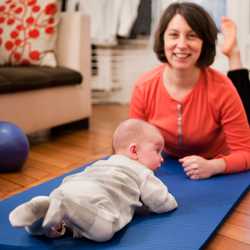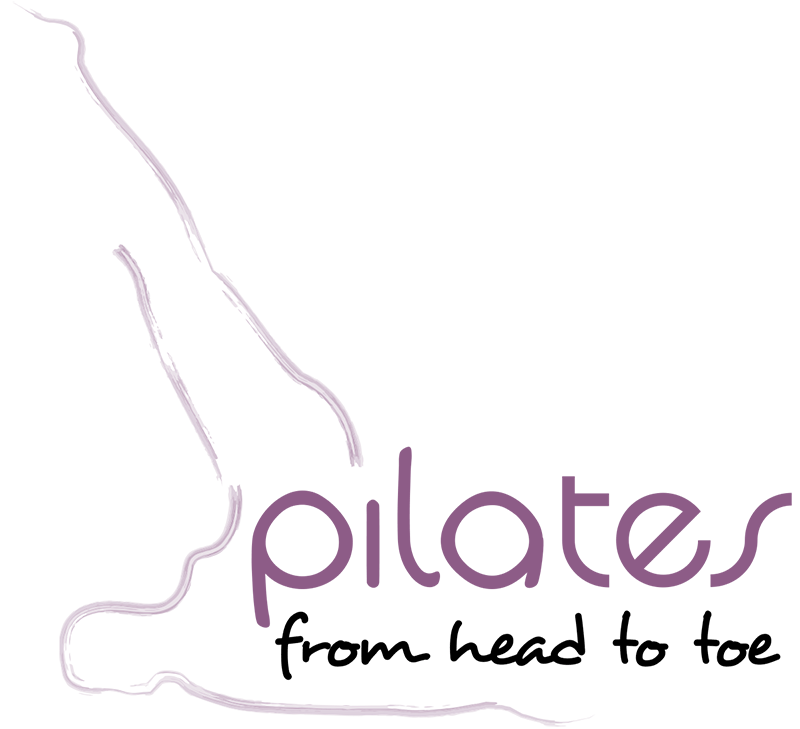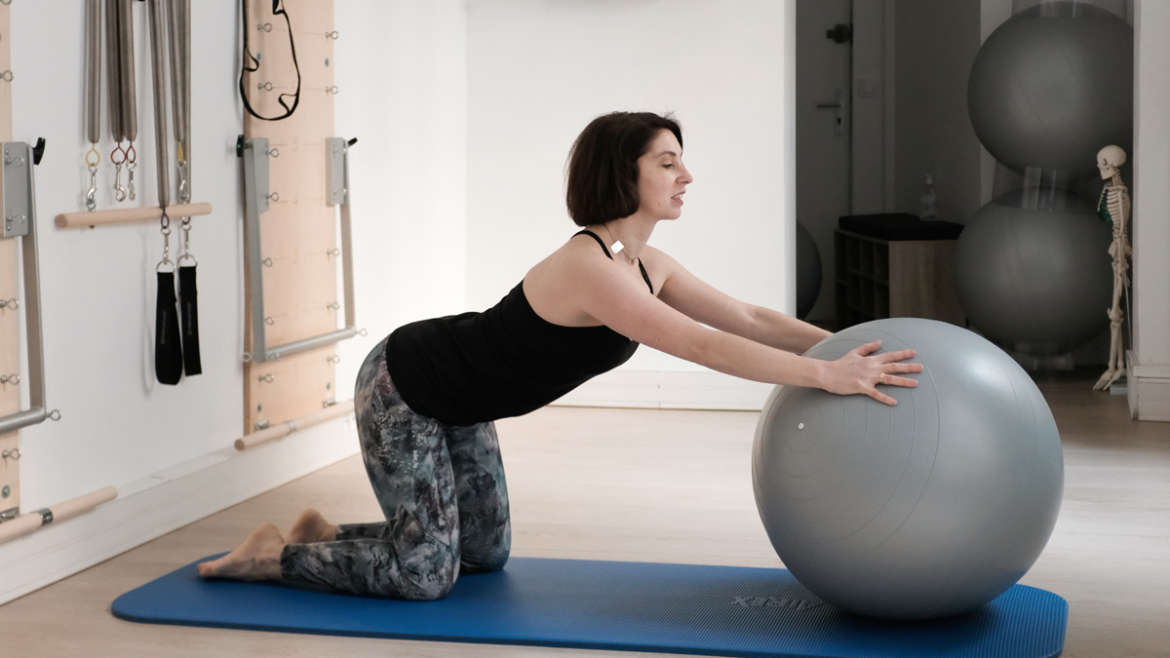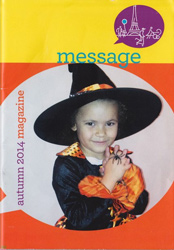Non-mobile babies are welcome, hey can spend class on a mat next you! This small group allows me to adapt the exercises to fit the needs each post-partum mother. It is possible to take this course in parallel with your pelvic floor rehab. We do not do any exercises that could compromise a fragile pelvic floor. This class focuses on breathing, relaxing, stretching and reconnecting with the abdominal muscles. The goal is to help each woman make the transition from her post-natal body to her new stronger body in order to then continue in “regular” Pilates classes.
The When? What? How? and Why? of Getting Back to Exercising Post Partum
By Emily Mazo-Rizzi
The short answer is: When you feel like it! When you have passed the point of total physical exhaustion and have gotten into a rhythm with your baby, you find yourself feeling more alert and your body is craving movement other than rocking, feeding and changing. These are signs that your body needs to do something besides being in a hunched over your precious little one. Your body is ready to enjoy movement again.
The longer answer is another question: Have you started your pelvic floor rehab sessions (la rééducation du périnée)? Carrying the weight of your baby inside of you for 9 months, being in labor and pushing all weaken pelvic floor muscles. France is one of the few countries to include pelvic floor rehab in its usual gamut of postpartum care. It is incredibly smart to do so as it reduces the risk of incontinence and organ prolapse, problems that every woman wants to avoid. If possible choose a health professional who practices the manual method which is much more adapted to meeting your body’s specific needs thus achieving best results.
Talk to your doctor about your desire to start exercising again when you go for your post-partum visit, chances are it will be encouraged as long as it is a low impact. Which leads to….
When?
The short answer is: When you feel like it! When you have passed the point of total physical exhaustion and have gotten into a rhythm with your baby, you find yourself feeling more alert and your body is craving movement other than rocking, feeding and changing. These are signs that your body needs to do something besides being in a hunched over your precious little one. Your body is ready to enjoy movement again.

The longer answer is another question: Have you started your pelvic floor rehab sessions (la rééducation du périnée)? Carrying the weight of your baby inside of you for 9 months, being in labor and pushing all weaken pelvic floor muscles. France is one of the few countries to include pelvic floor rehab in its usual gamut of postpartum care. It is incredibly smart to do so as it reduces the risk of incontinence and organ prolapse, problems that every woman wants to avoid. If possible choose a health professional who practices the manual method which is much more adapted to meeting your body’s specific needs thus achieving best results.
Talk to your doctor about your desire to start exercising again when you go for your post-partum visit, chances are it will be encouraged as long as it is a low impact. Which leads to….
What?
Begin with gentle exercise that includes lots of breathing and rests between series of movements. Start with short periods of exercise and slowly build up.
Choose an exercise method that: will help you rebuild abdominal strength, help you relieve any aches and pains you might have from tending to your baby, is low impact, gentle, encourages breathing and is not too strenuous.
As a Pilates instructor I think that Pilates is especially recommended as it focuses specifically on strengthening abdominal muscles and doing so with gentle movements coordinated with breathing. Decompressing the spine is one of the goals of the Pilates method and the exercises are perfect for people who spend too much time in one position for example bent forward over a new baby (or a computer!).
Other good options are gentle practices of Yoga and swimming - once you are allowed to get back into a pool. Simple ways to get moving are: taking your baby on a walk in the stroller around your neighborhood, or lying down and concentrating on your breathing which will relax you thus relieving tensions and oxygenate your body. Whatever method you decide on, choose a teacher who listens to your story and knows your personal needs and can adapt exercises to suit your current condition. When selecting a group class check on class sizes to make sure you won’t be lost in a crowd.
How?
This might be the killer question, but where there is a will there is always a way!
Take baby. Many exercise studios in Paris offer post-partum classes for new moms. Some classes, including my own, allow new moms to bring their babies to class. Having the babies in class is of course distracting but at least you are out of the house, interacting with other moms and exercising in between feeds and snuggles. If you’re lucky, baby will sleep through class!
Exercise at home. Look into bringing a teacher to you. Many Pilates, Yoga and other fitness trainers will teach in homes. Get together with Message moms and have class in your living room. Look online for videos of classes, but it is advisable if possible, to work with an exercise practitioner for best results.
Wait until your partner comes home. Then it’s your turn to head out to exercise. One night a week out on your own can be a real treat. Leave your guilt at home, you deserve it and your partner is happy to bond with baby!
Get a babysitter. If you can afford to and go exercise during the time of day you feel most energetic.
Why?
You think you might pop out number 2 in a year or so? You can’t be bothered? Your baby is 5 years old, it’s too late? There are so many excuses, so many reasons not to, but there are far more reasons to “just do it”.
Parenting a small child is one of the most physically challenging activities there is, especially in a big city like Paris. In addition to carrying, rocking, and strolling, you schlep up and down stairs in buildings, in the metro and in the streets. You need to be strong in order to carry your children and their things. You need abdominal muscles that support you and protect you from potential injury. Those same muscles are vital for ensuring that your next pregnancy is comfortable and healthy.
You need to feel that you are healthy, strong and that you look good for yourself and your partner. The happier you are the better parent and partner you can be, taking care of your body is key in this endeavor.
Traduit de l’anglais par Christel Paris.
This article was written for "Message” une association pour des parents anglophones à Paris et publié dans l’édition d’automne 2014 du magazine.


